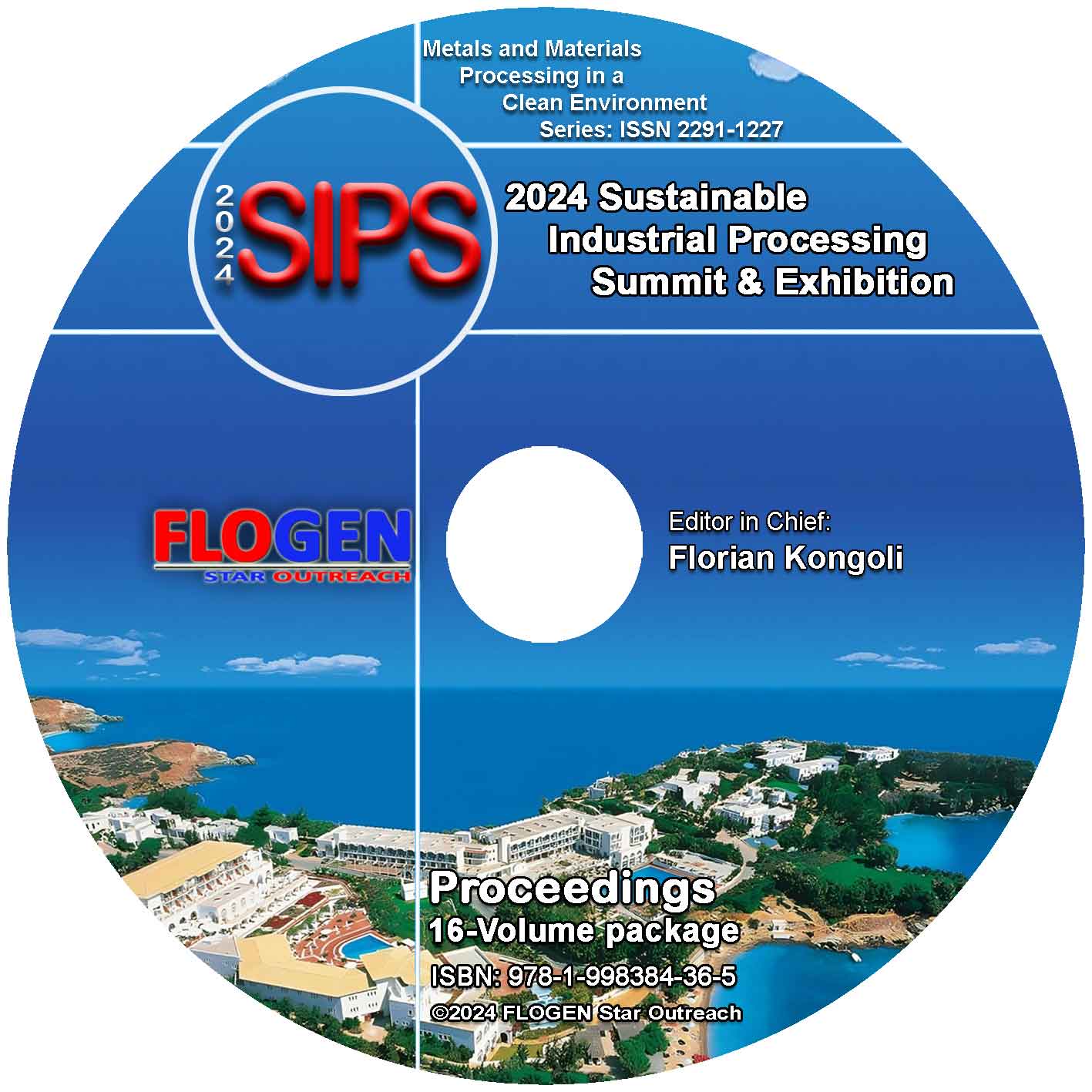2024 - Sustainable Industrial Processing Summit
SIPS 2024 Volume 1. Abe Intl. Symp. / Oxidative Stress and Technological Innovations in Medicine
| Editors: | F. Kongoli, H. Inufusa, T. Yoshikawa, C.A. Amatore, H-Y. Chen, W-H. Huang |
| Publisher: | Flogen Star OUTREACH |
| Publication date: | 23 December 2024 |
| Pages: | 218 pages |
| ISBN: | 978-1-998384-04-4 (CD) |
| ISSN: | 2291-1227 (Metals and Materials Processing in a Clean Environment Series) |

CD shopping page
ROLE OF OXIDATIVE STRESS AND ANTIOXIDANTS IN LIVER STEATOSIS
Haruhiko Inufusa1; Yoshiaki Harakawa1; Fuhua Yang1;1GIFU UNIVERSITY, Gifu, Japan;
Type of Paper: Plenary
Id Paper: 120
Topic: 54
Abstract:
Fatty acid liver disease is a growing health problem associated with the increasing prevalence of obesity and diabetes. Elevated free fatty acid (FFA) concentrations are linked with the onset of peripheral and hepatic insulin resistance and, while their precise action in the liver remains unclear, it leads to liver steatosis. Although steatosis represents a reversible state of excess intra-hepatic lipid, it is also associated with increased susceptibility to oxidative stress and inflammation thought to trigger its progression to irreversible liver injury characterized by steatohepatitis, cirrhosis and hepato-carcinoma. The current molecular mechanisms of this progression remain poorly understood. However, the “two hit” hypothesis represents the most commonly accepted model. In this model, steatosis represents the first “hit”, sensitizing cells to subsequent stress with a dysregulation of energy production and accumulation of ROS. The second “hit” may take many forms, including drugs, hypoxia or cytokines, eventually leading to inflammation or steatohepatitis. Few in vitro models exist that can recapitulate this progression and its dynamics. Twendee X (TwX) is a potent anti-oxidant and that it is capable of reducing H2O2-induced and acetaldehyde-induced oxidative stress in native HepG2 cells. We have established the FFA-induced lipid accumulation in HepG2 cells, as well as ascertained that the model induced significant oxidative stress and perturbed mitochondrial bioenergetics. We also established the effect of TwX treatment in dose response in both preventive- or curative-treatment designs, and further obtained evidence of intracellular signaling pathways involved both in the FFA-induced oxidative stress and in TwX activity in regulating and normalizing these pathways.